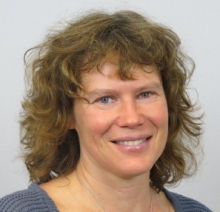Issue:
The Spanish city of Seville is served by water utility Emasesa. Carmelo Garcia Santana is its head of innovation, and will be speaking at the World Water-Tech Innovation Summit taking place in London in February. Keith Hayward spoke with him about activities at the utility to deliver change.

Innovation is about change. That does not mean innovation for the sake of innovation. The change needs direction, and for Spanish water utility Emasesa, which serves the city of Seville, that direction of change is framed by the fact that it is a public utility integrated with the environment and with society, explains Carmelo Garcia Santana, Emasesa’s head of innovation.
These framing factors have led the utility to set out a sustainable public management strategy. This business strategy, and the 86 actions defined across five strategic lines that it contains, directs the utility’s efforts to innovate.
Governance is one of the strategic lines, explains Santana. The second covers the guarantee and availability of services and processes. The third covers the environmental behaviour of the utility. The fourth relates to Emasesa’s staff, while the fifth is about participation and communication with the utility’s stakeholders.
Target areas for innovation
Emasesa’s aim with its business strategy is to deliver improvements in the numerous action areas within these five lines. For example, governance aims include developing new tariff models to improve sustainability and ensure access for people with special needs, says Santana. Aims in the area of services and processes include increasing monitoring of supply network water quality, smart metering, and detection of emerging pollutants in reservoirs, for example.
‘Regarding environmental behaviour, we want to improve our energy self-sufficiency, increasing energy production and decreasing energy consumption,’ says Santana. Other aspects of environmental performance include improving water efficiency by reducing leakage, for example, and reducing odours.
‘We have to make a cultural change, especially relating to innovation,’ says Santana, regarding the area of Emasesa’s staff. Aspects of this include improving knowledge and talent management, and fostering a healthy work environment. ‘We want to get more participation to foster creativity, to get ideas and develop the ideas to make new projects based on those ideas,’ he adds.
Meanwhile, the aims regarding stakeholders include fostering cooperation with developing countries and strengthening collaboration with the education system. ‘We are now developing a Masters degree based on the water cycle,’ says Santana, adding: ‘We are developing an e-learning platform to offer training courses to other people or companies.’
Integrating innovation
These aims set the agenda as far as innovation is concerned. To actually achieve innovation requires more, and for Emasesa this is being supported by an innovation strategy.
‘The innovation strategy is integrated into the business strategy in two ways,’ explains Santana. ‘The first way is actions we have defined to improve research and development management.’
One action in this area is implementation of a software-based system for managing the surveillance of technologies. Another is to implement new approaches to open innovation. ‘We want the opportunity for other stakeholders to participate in our innovation processes,’ says Santana. One example here is the way the utility works with the University of Seville, whereby Emasesa sets some targets about what it wants to achieve and then the university responds with proposals about how to meet those targets. Another is to run competitions to get input from citizens to improve the utility’s processes.
To read the rest of this article, log in here. New users can register here for free trial access, or subscribe here.
Carmelo Garcia Santana, head of innovation at the Seville water utility Emasesa, will be speaking at the World Water-Tech Innovation Summit taking place in London on February 20-21. For more information, see: http://worldwatertechinnovation.com
Keywords:
- Spain, innovation, utility management






